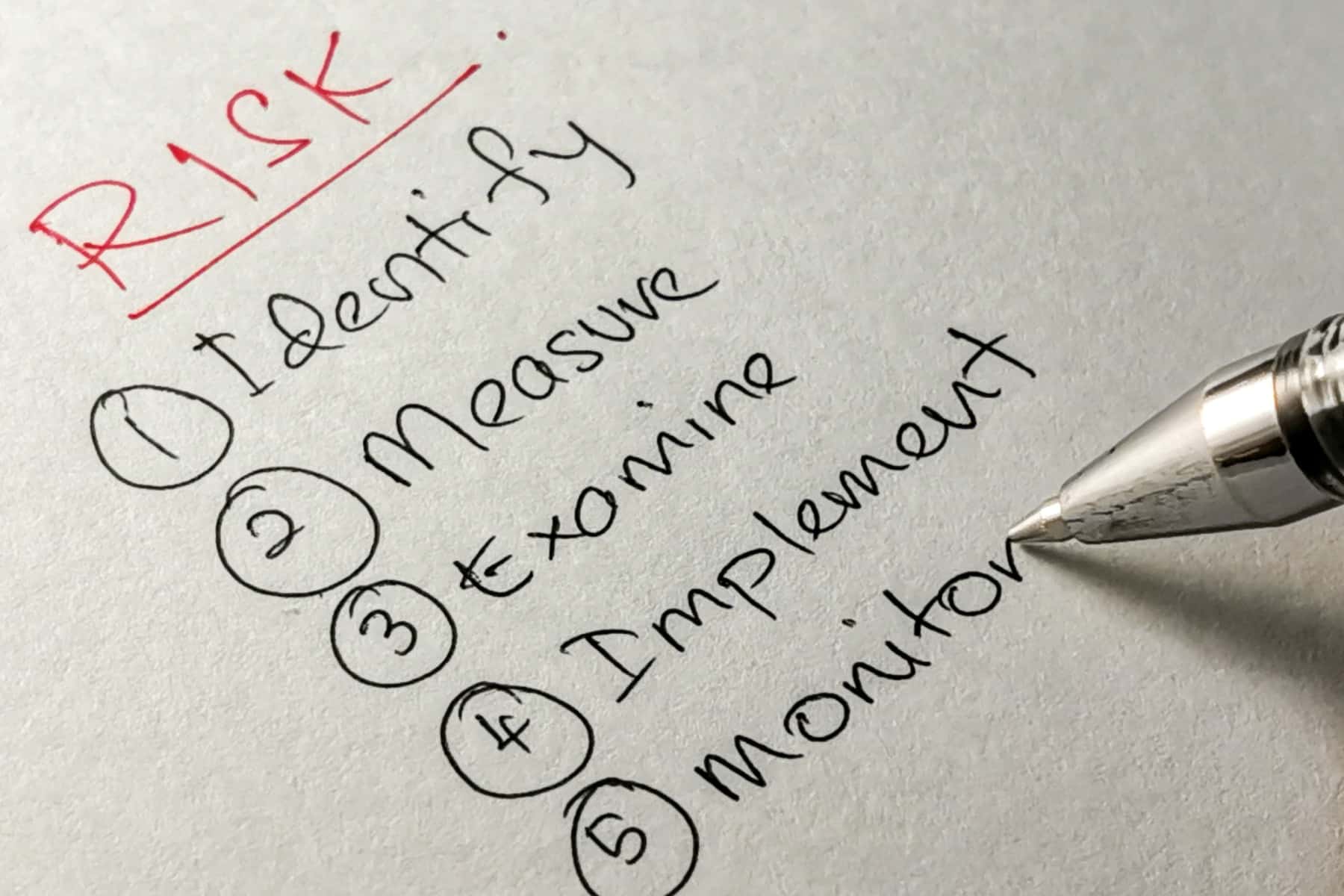The importance of aligning IT Strategy with business strategy

From cloud computing to digital workspaces, every organisation has seen IT become a vital part of their business function. Your business strategy might set out your organisational goals, but it’s your IT strategy that enables you to achieve those outcomes. Fail to align, and you could be left with some costly IT functions that don’t deliver for your business.
Many organisations are still getting this alignment wrong. In this article, we’ll look at some of the common symptoms of strategy misalignment and how you can overcome them.
Suggested reading: A strategic partner can help you create and execute the long-term vision you need to succeed at IT. That is precisely what we do at Dr Logic. Check out our case studies if you want to learn more about how we help.
Why don’t IT and business strategies align?
According to a recent report by the Economists Intelligence Unit, executives blame poor collaboration between their IT function and business units for lack of progress on their firms’ digital objectives.
Despite being a key objective for organisations, strategies still aren’t lining up. We’ll be exploring the main reasons why below.
1. There’s an unwillingness to invest
The ‘if it ain’t broke, don’t fix it’ mindset can save you money, however it can also prevent your business from growing and making necessary changes to your tech. To deliver strong and modern IT capabilities, companies must continually invest in the latest technologies, and train their people to use them correctly.
With that said, evaluating software and applications on a constant basis takes time, effort, and knowledge — efforts which can still lead to occasional mistakes being made. Investment and change can be daunting, causing many business leaders to shy away from the challenge and become unwilling to support an ambitious IT strategy. You need to analyse what you’re doing today and ensure that this is aligned with your business strategies and goals.
The Data: PwC research shows that 54% of executives struggle to align innovation strategy with business objectives.
Interested in discussing your current IT setup?
Book a free technology consultation with one of our team members.
2. Leaders lose focus on value
The opposite of unwillingness to invest can also be true. Especially non-technical business leaders who are vulnerable to “shiny new object” syndrome – looking to purchase and implement the newest tech or on-trend piece of hardware or software, even if it doesn’t provide a core service or return on investment.
Investment in the wrong technologies is a sure-fire way to create strategy misalignment. Because many leaders don’t possess the same knowledge as IT experts, they unknowingly invest in technologies that don’t add value to the outcomes of your business strategy. This approach can also cause employees to feel alienated, lowering overall morale as they struggle to learn a new system only for it to change again. Finding partners and advisors to provide gaps in IT expertise is critical.
The Data: Non-value adding activity punishes bottom lines. Data suggests that, on average, 10% of company spending is wasted every year due to misalignment.
3. A lack of communication
As business leaders know, poor communication is the root cause of most business woes – and your strategy alignment is no different. Failure to produce and communicate/consult on a coherent strategy across business and technology quickly leads to different directions of travel. For example, business leaders may take structural decisions without considering the IT impact, or IT leaders implement system changes that the business can’t manage.
Either way, when business and technology leaders don’t communicate, strategies don’t harmonise.
The Data: 86% of corporate executives and employees say ineffective communication is one of the key reasons for failure in the workplace.
4. Leadership Turnovers
This one’s pretty self-explanatory. Leadership changes often cause significant misalignment. When long-standing relationships are broken and new ideas enter the business, departments inevitably set off on a new course. When new starters who have the ability to influence strategy are eager to make their mark, it’s easy for short-term wins to take priority over the long-term strategic alignment.
The Data: This problem is only getting worse. Since the start of the COVID-19 pandemic corporate leadership turnover has risen to 18%, which directly impacts the alignment of IT and business strategy.
The benefits of aligning IT and business strategies
So, what’s the upside of this alignment? Ensuring that your business’ technology, goals, roadmaps, and strategies are aligned brings benefits to every department across your company.
Specifically, here are four tangible benefits businesses see by aligning their IT and business strategy.
1. More efficient resource management
Having all your employees pulling in the same direction is a great way to optimise effort within your organisation. Staff can focus on only the most value-adding activities, reducing waste and delivering capabilities faster.
Of course, from a cost perspective, there’s a residual benefit too. More productive, streamlined, and immersed staff are more efficient per head. Data shows that employees can do 57% more if leaders help them align their work organisational goals, proving that you can do more with less when your goals are aligned across your business, making for a more efficiently run company.
2. Increased market competitiveness
A customer-focused service offering will always be a key differentiator for any business – and so by aligning business and IT strategies you’re in a much stronger position to enhance that service delivery.
Leveraging technology allows you to effectively tailor your end-to-end services in a way that’s personalised and adapted to your market. Whether that’s exploring software automation to deliver faster customer service, levelling up your data with machine learning to anticipate customer needs better, or by joining the 97% of users whose productivity increases when using Apple hardware, leveraging technology helps you stand head and shoulders above the competition when it comes to your service offering. So, it just makes commercial sense to ensure that the significant benefits of your company’s technology is not wasted by failure to align strategies.
3. Faster achievement of goals
If IT and business are striving towards the same overall objectives, the chances are you’ll get there faster. Synergising effort, ideas, and focus bring more capability and capacity to the table, and as we all know, results are generated quickly when working as a cohesive team.
This is especially important if you’re a high-growth business or operating in a competitive market. Over 52% of businesses stated that their reason for investing in new technologies was to reinforce their business growth. Those that win have to find a way to be the first, and in a digital world, the winners are usually the ones who innovate their technology the fastest!
4. Greater chance of profitability
Ultimately, all of the above contributes to a healthier bottom line and higher profits. Research shows that highly-aligned companies are 2.3x more likely to exceed their revenue goals.
So, whether that comes from being more competitive or simply keeping costs down, aligning IT and business strategy maximises your chance of growing your profit line and keeping your shareholders happy.
How you can achieve IT and business alignment
The communication and collaboration structures you build within your organisation will define your business and IT alignment. You need to ensure that leaders, managers, and employees at all levels adopt a collaborative mindset alongside trusted industry partners.
Here are four steps to take to get better alignment in your business.
Step 1. Long-term collaborative planning
Any business strategy is only as stable as the foundations it is built upon. Your strategic planning should be inclusive and focused on the long-term to build the strongest foundation possible.
Business leaders across departments have to co-create the strategy together. Work to develop a common set of goals and objectives that every department can contribute to.
From an IT perspective, it’s all about understanding which technological capabilities the business needs to meet its goals in the immediate and longer term. For businesses that don’t have these capabilities in-house, consider engaging an external technology partner to support your team.
Why are long-term partners important here? Firstly, they’re an extension of your business and help deliver consistent long-term service for you and your customers. Secondly, consistency creates stability, which is vital to counter the effects of potential leadership turnover. Conversely, get your long-term supplier partnerships right, and data suggests you’ll see a 2x increase in growth and performance.
To help you along your collaborative planning journey, here are some questions to ask yourself when planning a long-term strategy:
- Where do we want to be in one, two or five years? What would success look like at each point?
- What do our customers expect from us now and in the future?
- What threats and opportunities do we see emerging in our market in the next five years?
- What are our competitors doing in the market? How can we be better?
- Which partners are coming on this long-term journey with us? How will they add value?
- How can we use technology to answer any of the above?
The Data: A common goal improves performance by 90%. If you’re still not convinced, this data is tried and tested from the 1980s, so it stands the test of time!
Step 2. Communicate
While strategy is set at the top, it takes the efforts of everyone to deliver it. To ensure alignment at all levels, the strategy needs to be effectively communicated so that everyone’s on board.
Bring the strategy to life for managers and junior staff by showing exactly how they will contribute from within their domain – but remember to translate the strategy so that it’s meaningful to them. And then build that into objectives or OKRs.
Here are some of the best practices when communicating your strategy throughout the business:
- Keep the overall vision simple and easy to understand for everyone.
- Set timeframes, milestones, and KPIs so that everyone knows how and when progress will be measured.
- Mix up your communication methods. Use visuals, schedule collaborative Q&A sessions, and create collateral for staff to review in their own time.
The Data: Well-connected teams who communicate efficiently through social channels and technology see productivity increases of up to 25%, so it’s well worth getting your communication right.
Step 3. Nurture the alignment
To prevent alignment from becoming disjointed over time, ensure you have dedicated resources in place to maintain alignment in the longer term – this could be a Director of Operations, a CTO, your in-house project management office (PMO), or an external partner who works with your business on a consultative basis.
This is another example of where external partners are invaluable. An objective viewpoint to spot and address misalignment could be the difference between strategic success or catastrophic failure.
What does good look like when it comes to maintaining alignment over time? Here are some areas to look out for in your business:
- Employees at all levels should still know and understand the strategy weeks or months from the initial communication.
- Performance against your KPIs should be strong (if it isn’t, see step 4).
- Directors and managers, in particular, should be meeting regularly as part of their operational governance.
- Your customers should be reporting improved levels of service.
- You should start outperforming your competitors.
The Data: If you want your strategy alignment to succeed over time, don’t be one of the 49% of organisations who only spend one day a month reviewing strategy performance – if you are, you’re far more likely to fail!
Step 4. Iterate and improve
Remember that your business doesn’t operate in a vacuum. Especially in a competitive, high-growth environment, things change daily. While your strategy is set long-term, you need to remain agile and succeed.
Again, this all requires great communication across IT and business. When business priorities change, the underpinning technology ecosystem must change too, so ensure your IT strategy delivers flexible and scalable capabilities that can innovate quicker.
The Data: Strategy implementation and alignment is a long-term game; with 98% of leaders agreeing that good strategy implementation should take more time than strategic planning.
The Key: Partnerships which drive long-term strategic alignment
As tech strategy and implementation become ever more critical, you must align your IT and business strategies to cut a competitive edge.
By thinking longer term, you’ll ensure everyone in your business can buy into a collective vision. You can also align your external partners, which is a vital and often overlooked step in the alignment process. The data shows:
- 57% of businesses believe their external partners and suppliers give them a competitive edge in the market.
- Strategic partners help you leverage best in class industry knowledge to move towards your strategic goals faster.
- Strategic partners are objective and give you an external sense check on how your IT and business strategy alignment really looks.
- Regular supplier switching destroys momentum, whereas long-term partners provide stability.
At Dr Logic, we know the value of long-term strategic partnerships. We help ambitious businesses see growth through our enterprise Mac IT support. Our partners have innovated their operations through our range of solutions, including service management, support, cyber security, project management, and strategic consultancy.
What has this led to? Flexible solutions that ensure our clients have the technology they need to over-achieve on their strategic business objectives.
Get into contact with us today, and see how we can help align and integrate your IT strategy.
- Poor Collaboration Holds Back European Businesses’ Digital Ambitions | Appian
- PwC’s Innovation Benchmark Report
- Organizational alignment statistics in 2020 · Minsilo
- Amazing Communication in the Workplace Statistics for 2021
- Companies are bleeding leadership talent | Forbes
- Productivity Flounders When Organizational Goals Don’t Align with Employee Goals – HR Daily Advisor
- 30+ essential facts about Apple in the enterprise | Computerworld
- Mac adoption in enterprise grows, survey says | Computerworld
- 193 Technology Statistics You Must Know: 2021/2022 Market Share Analysis & Data – Financesonline.com
- Why is Strategic Alignment Important – Complete Guide to Strategic Alignment
- Taking supplier collaboration to the next level | McKinsey
- Goal setting and task performance: 1969–1980.
- The social economy: Unlocking value and productivity through social technologies | McKinsey
- 51 Strategy Statistics And 3 Key Lessons To Help You Succeed
- 51 Strategy Statistics And 3 Key Lessons To Help You Succeed51 Strategy Statistics And 3 Key Lessons To Help You Succeed
- 97 Supply Chain Statistics You Must Know: 2021/2022 Market Share Analysis & Data – Financesonline.com
We are looking to partner
with ambitious
like-minded brands
Like what you’ve read and would like to know what else we know? Then get in touch.





